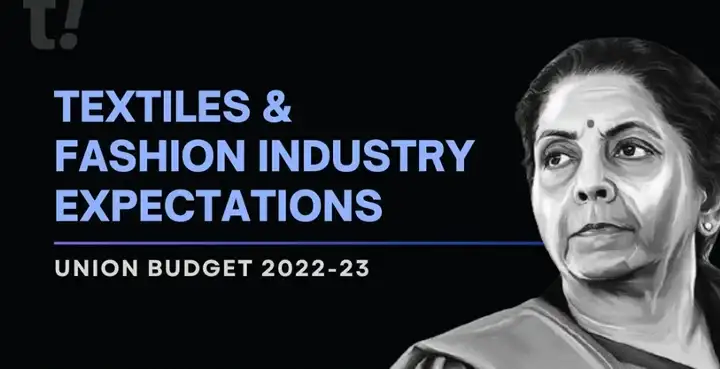With the country opening up again and recovering from the impact that the lockdowns had on businesses and the economy, there was much anticipation about the Union Budget that is released on the first day of February every year. As part of the industry that is the second-largest contributor to the country’s GDP, businesses dealing with textiles eagerly anticipate the announcement for the budget allocated not only clues them to the textile trends that may be anticipated for the new next year but also gives insight into how the supply chain will be affected. Most importantly, it gives a chance to all players of the textile industry to revise, modify, and revamp their business plans for the upcoming year.
Budget Allocation for FY23
The budget allocated to the textile sector for FY23 is 8.1% higher than the previous year, amounting to ₹12382.14 crores. Of this, about ₹133.83 crores have been reserved for the Textile Cluster Development Scheme, ₹100 crores for the National Technical Textiles Missions, about ₹15 crore each for the recently announces PM Mega Integrated Textile Region and Apparel Parks Scheme, and the Production Linked Incentive Scheme, and about ₹105 crores for the Raw Material Supply Scheme.
Key Takeaways
- The increase in the budget allocation has been done to increase cotton procurement by Cotton Corporation of India under the Price Support Scheme. This move is likely to wipe out the corporation’s losses incurred for the procurement of over two crore bales of cotton during the last two years. Furthermore, it will streamline the cotton procurement process in the textile supply chain. Like the previous year, cotton will hence continue to be imported at a 10% import duty.
- An important development with this new budget that may bring some relief to exporters is the exemption to incentive exports in handicrafts, textiles, and leather garments. Within incentivized exports, exemptions will be made on items such as embellishment and trimmings that may be needed by bonafide exporters of handicrafts, textiles, leather garments, leather footwear, and other goods, all of which had earlier attracted a 5% import duty. This exemption aims to promote global competition in exports that may further lead to employment generation in the sector and increase economic activity. With such boosts in exports, India’s textile business is likely to grow by 81% more in the next four years.
- In addition to this, about 350 custom exemptions have been proposed that are yet to be phased out. These include exemptions of certain fabrics for which sufficient domestic capacity exists. Furthermore, as a simplification measure, several concessional rates are being incorporated into the Customs Tariff Schedule itself instead of prescribing them through various notifications.
While the Budget raises import duties for certain fabrics that can be produced domestically, it exempts custom duties on the import of embellishments. This promotion of domestic manufacturing has been hailed by industry experts to be progressive and people-friendly. In particular, it provides a huge fillip to the domestic textile industry, something that was desperately needed as the industry focuses on recovering its losses from the last two years.
